Unearthing History at Brooklyn's Dead Horse Bay
A Time Capsule Beach Revealing Vestiges of New York's Forgotten Past
There’s a beach in Brooklyn that I love to visit, and there’s not a chance I’d lie on the sand or dip my toes in the water. It’s a time capsule beach. A treasure hunter’s paradise. It’s called Dead Horse Bay. The name itself is a testament to the industry that operated on that land in the late 19th century when deceased horses were sent on barges from Manhattan to what was then called Barren Island (originally named Beeren Eylandt, Island of Bears).
“The horse fat, blood, tissue, and marrow were used to manufacture a variety of profitable products, including fertilizer, glue, soap, grease, and even nitroglycerin. As many as 20,000 horses (in addition to dead cats, dogs, and other stray animals) were processed in a single year. The skeletal remains were tossed into this small inlet in Jamaica Bay, giving rise to its new moniker. Century-old horse bones remain plentiful and visible along its shores today.” —Archaeology.org
The stench of incinerated animal bodies was a nuisance and a public health hazard—capable of inducing sickness from two miles away.
It is nauseating; perfectly so… rotten, disgusting, swilly, unbearable to mankind. I am very glad to have the opportunity to inveigh against that nuisance. —Jacob Riis, author of How the Other Half Lives, describing the smell in Barren Island, in testimony to the New York State Board of Healthy in 1897.
Yet a thriving community resided on the island, processing garbage and forming a tight-knit community that comes to life in Carol Zoref’s novel, Barren Island.
In the 1930s, the industry was shut down, and Robert Moses took over the land to build New York City’s first municipal airport at Floyd Bennett Field. Moses had a plan to connect Barren Island to mainland Brooklyn and used waste from the city to fill in the land, wiping Barren Island off of the map and making way for Marine Park. For reasons that are not fully understood, the landfill for Moses’ projects wasn’t properly capped and as a result today, nearly 80 years later, trash that has survived the test of time washes up on shore—or rather takes command of the shoreline. If you visit the beach (which, fair warning, is prohibited by law), you’ll hear a beautiful symphony of glass bottles clinking in the waves. To hear the sound, click over to my Instagram.
The scene at the beach tells the story of life in the 1950s. Strewn across the sound, you’ll find household garbage including glass bottles, ceramics, leather shoes, and plastic toys, and more.
Beyond that, the rubble of houses–razed as per eminent domain–was scooped up and now appears onshore. The lower-income families whose homes were bulldozed often couldn't afford moving trucks and were given short lead times to eviction, which meant they left many of their belongings behind.
Whenever I visit, I find myself wondering what tale each object could tell.
Words of the Week:
Bits of broken glass
Glimmering on the shoreline
Bring joyful moments
A haiku by Amy from NYC Aromatica.
Photos of the Week:
I’m doing something a little different with photos this week and showcasing side-by-side images of objects I found at Dead Horse Bay and what they looked like when they were new.
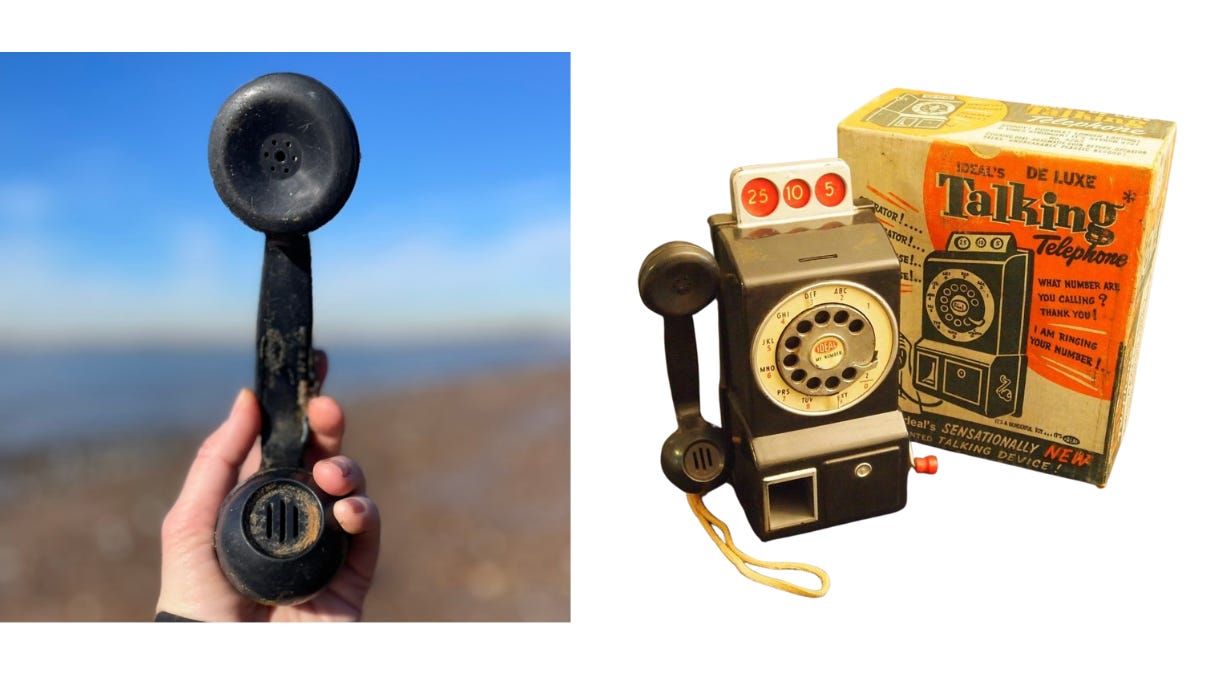
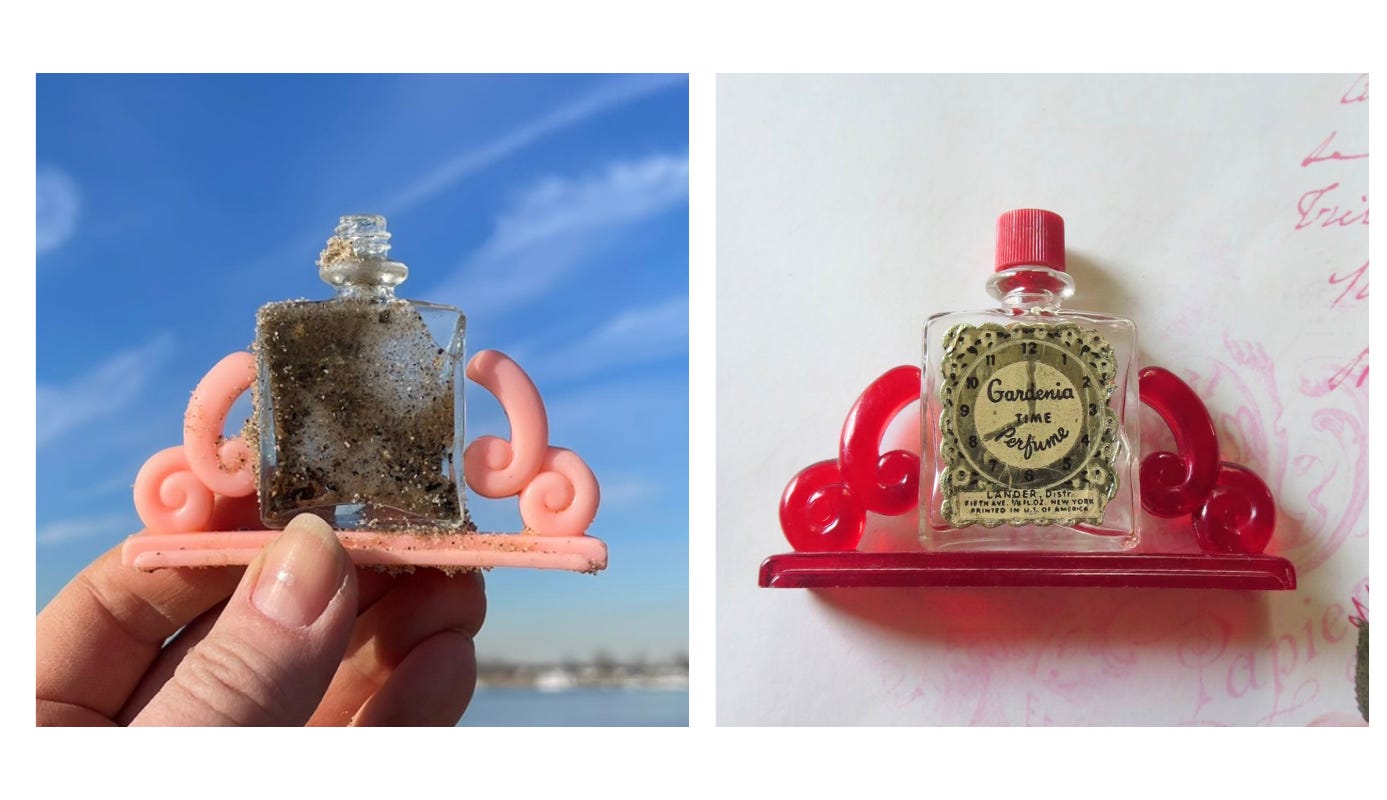
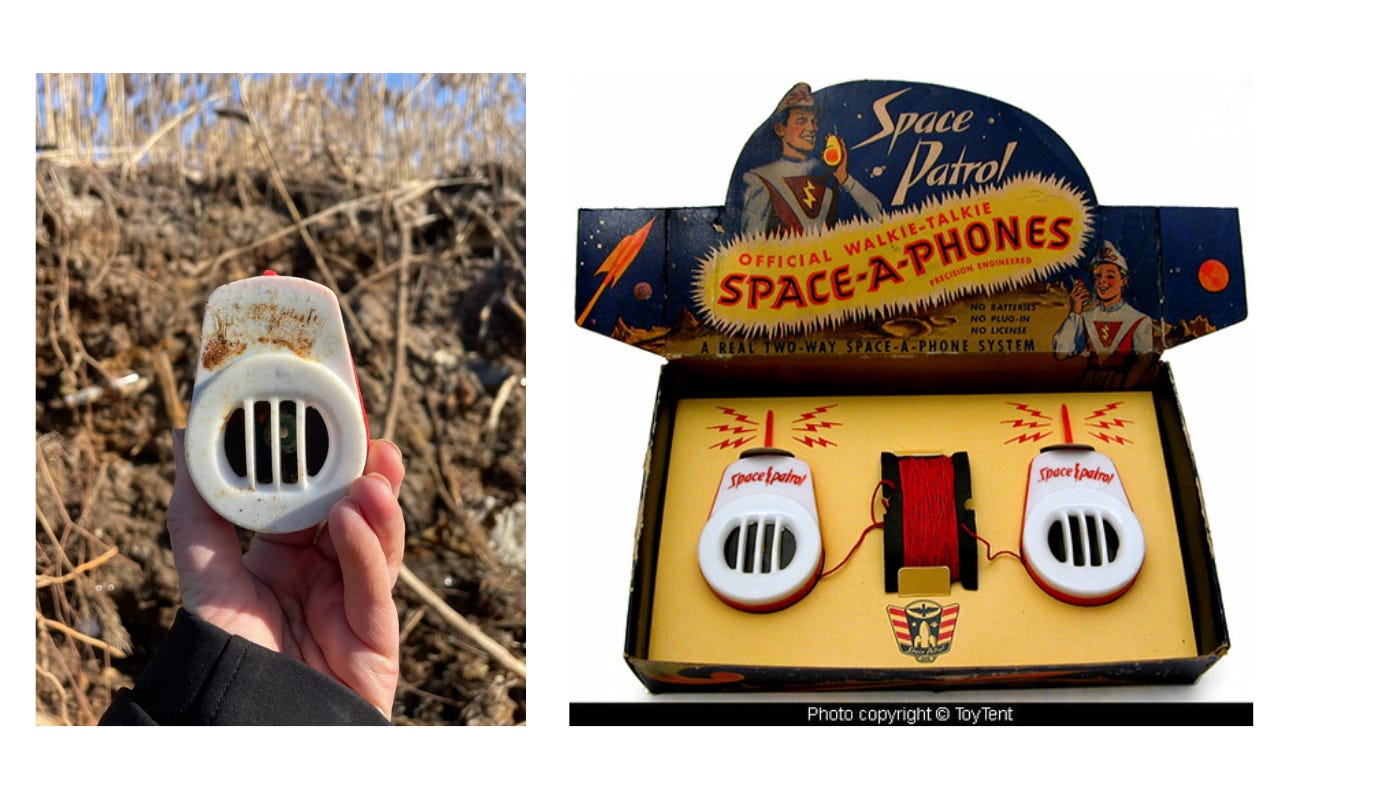





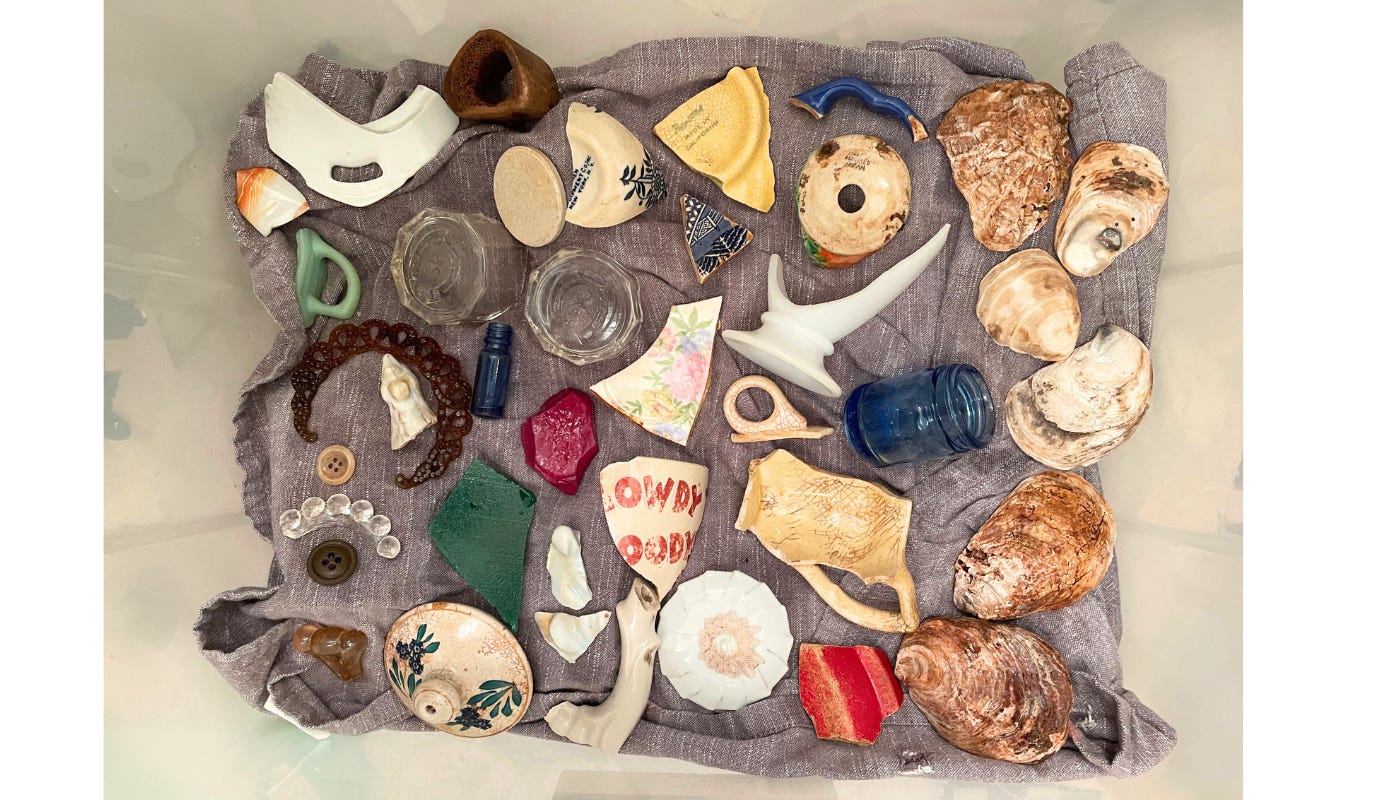
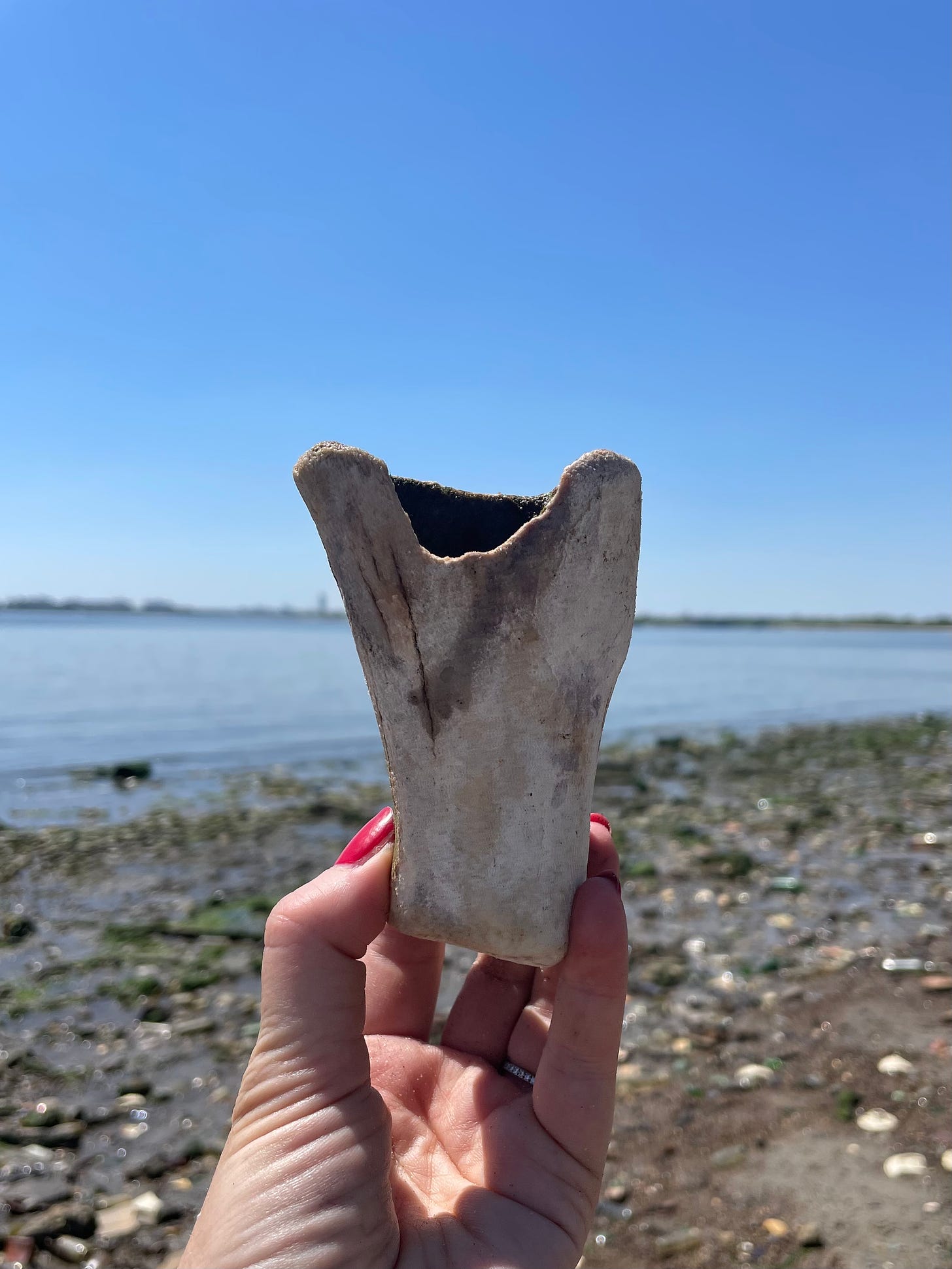
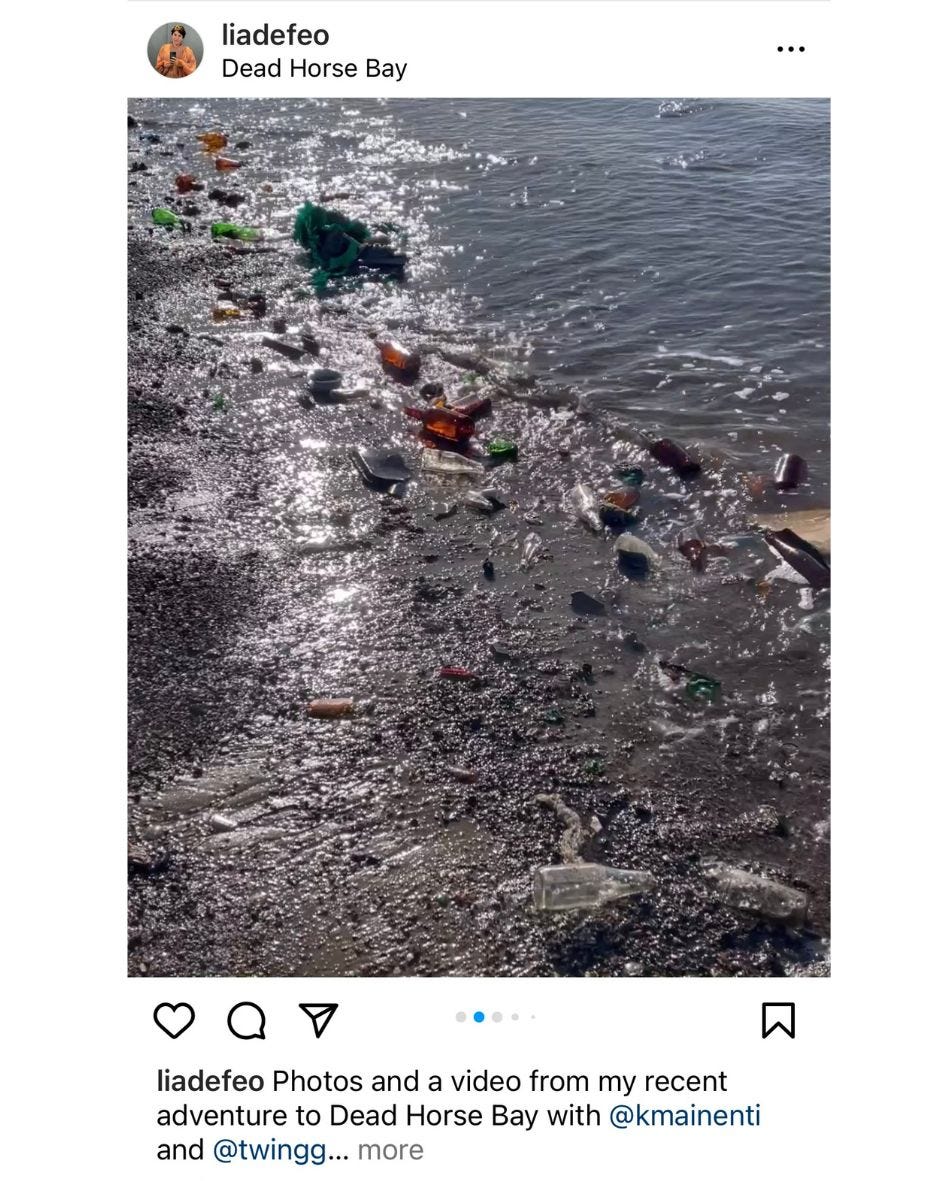
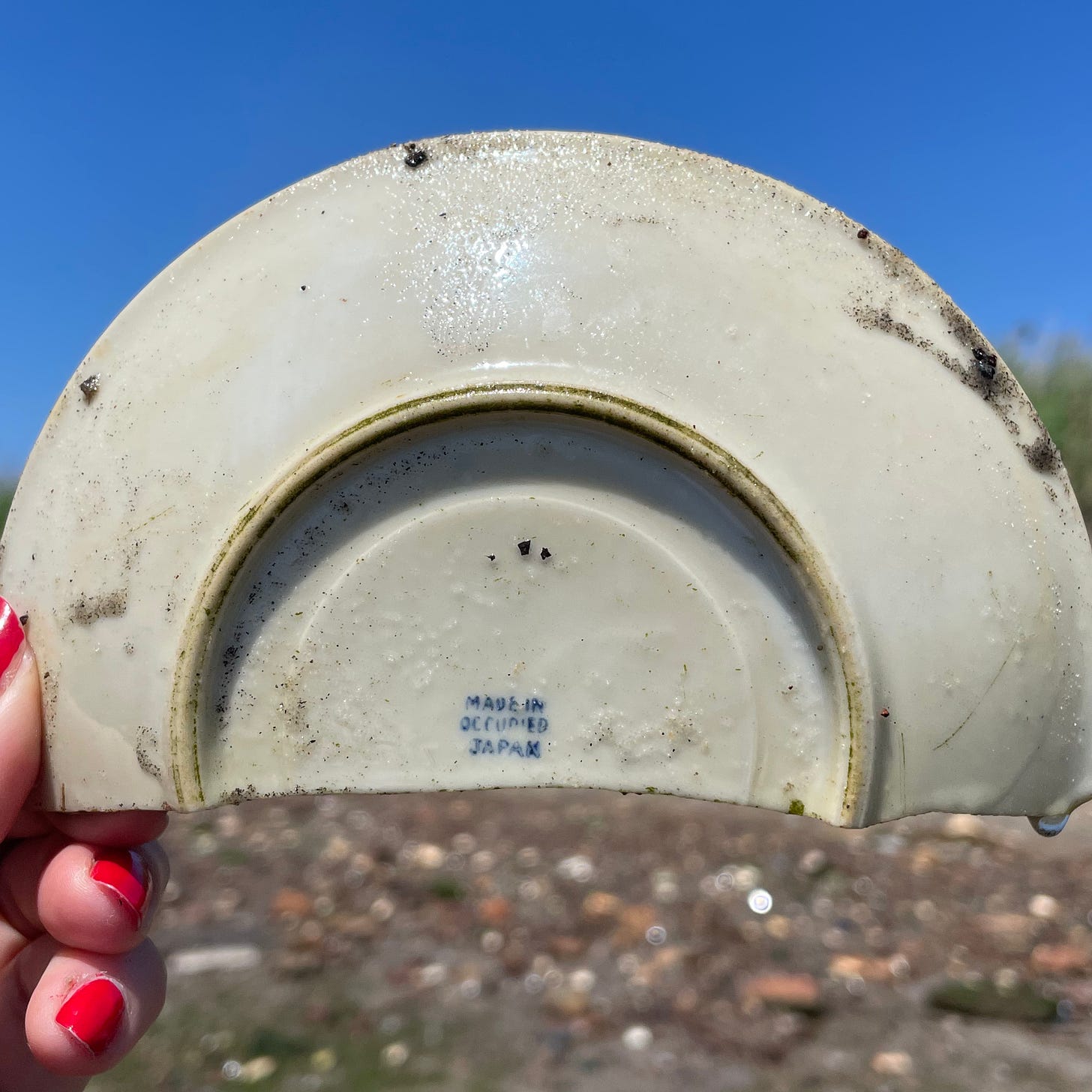
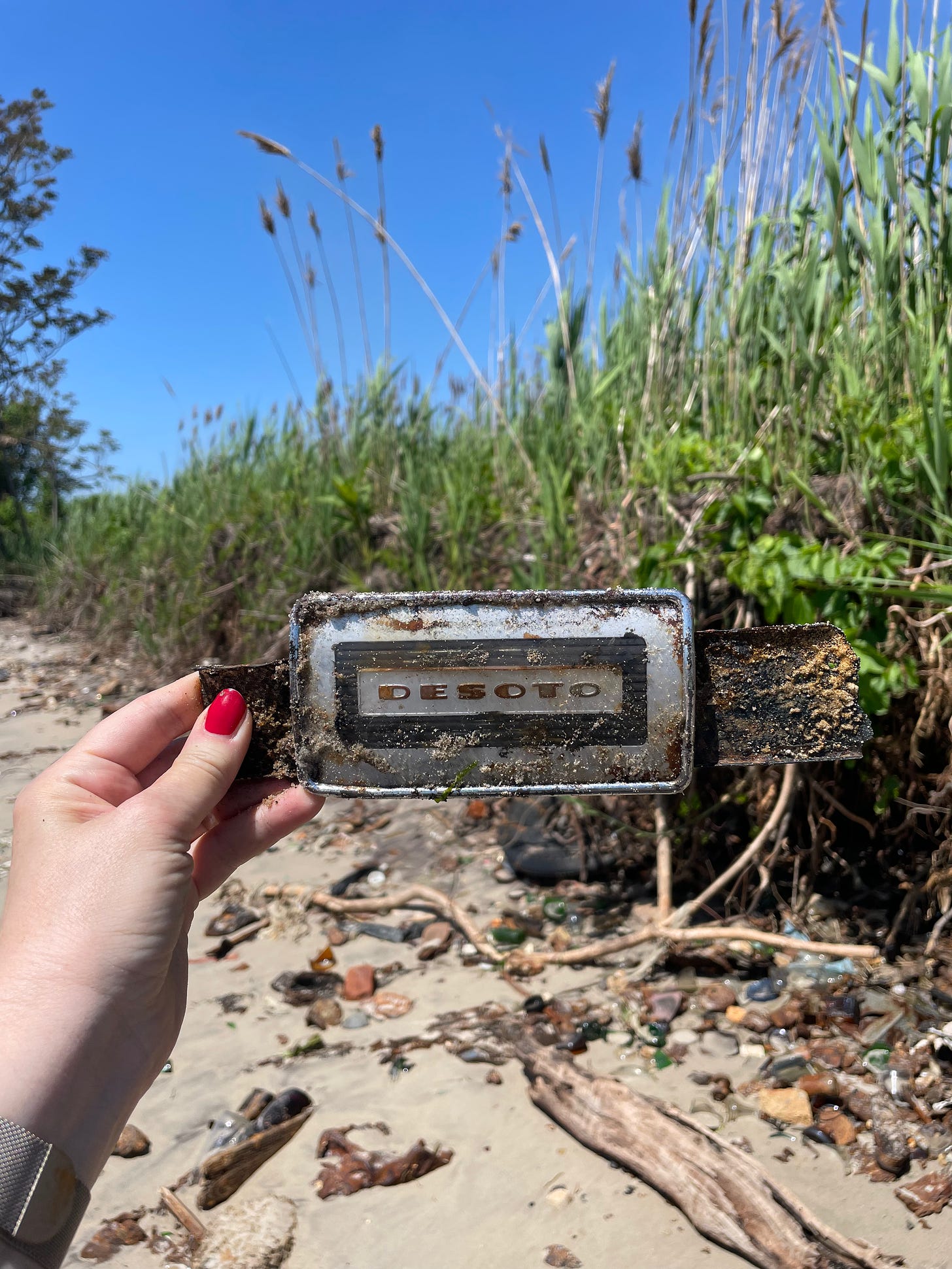
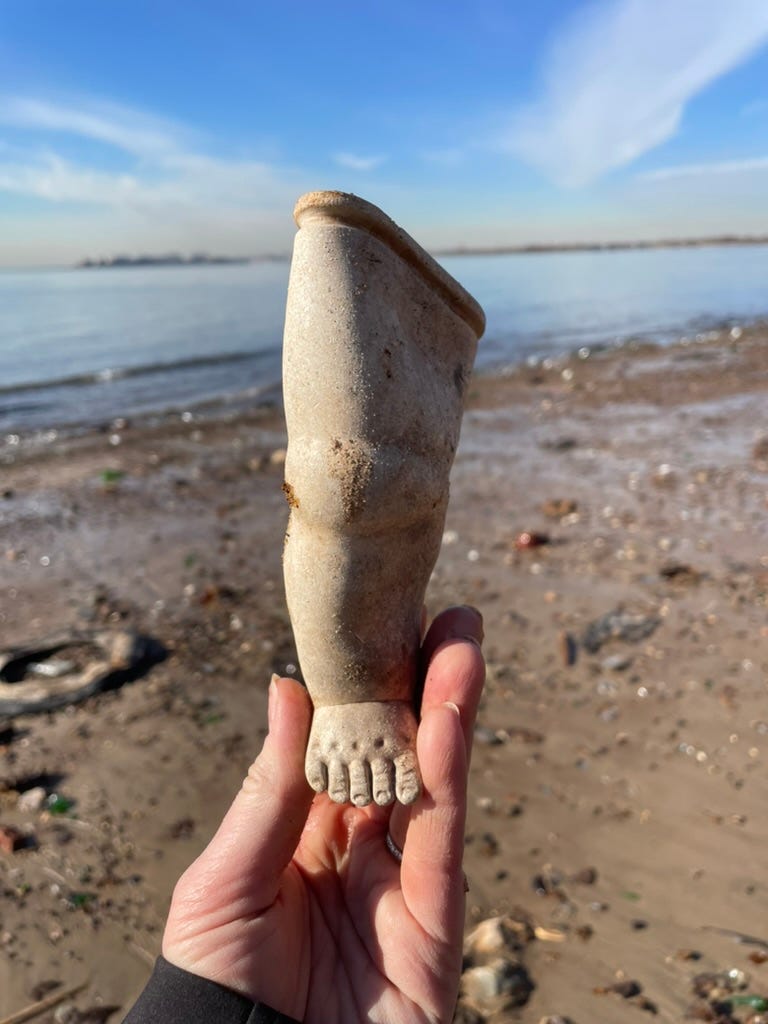
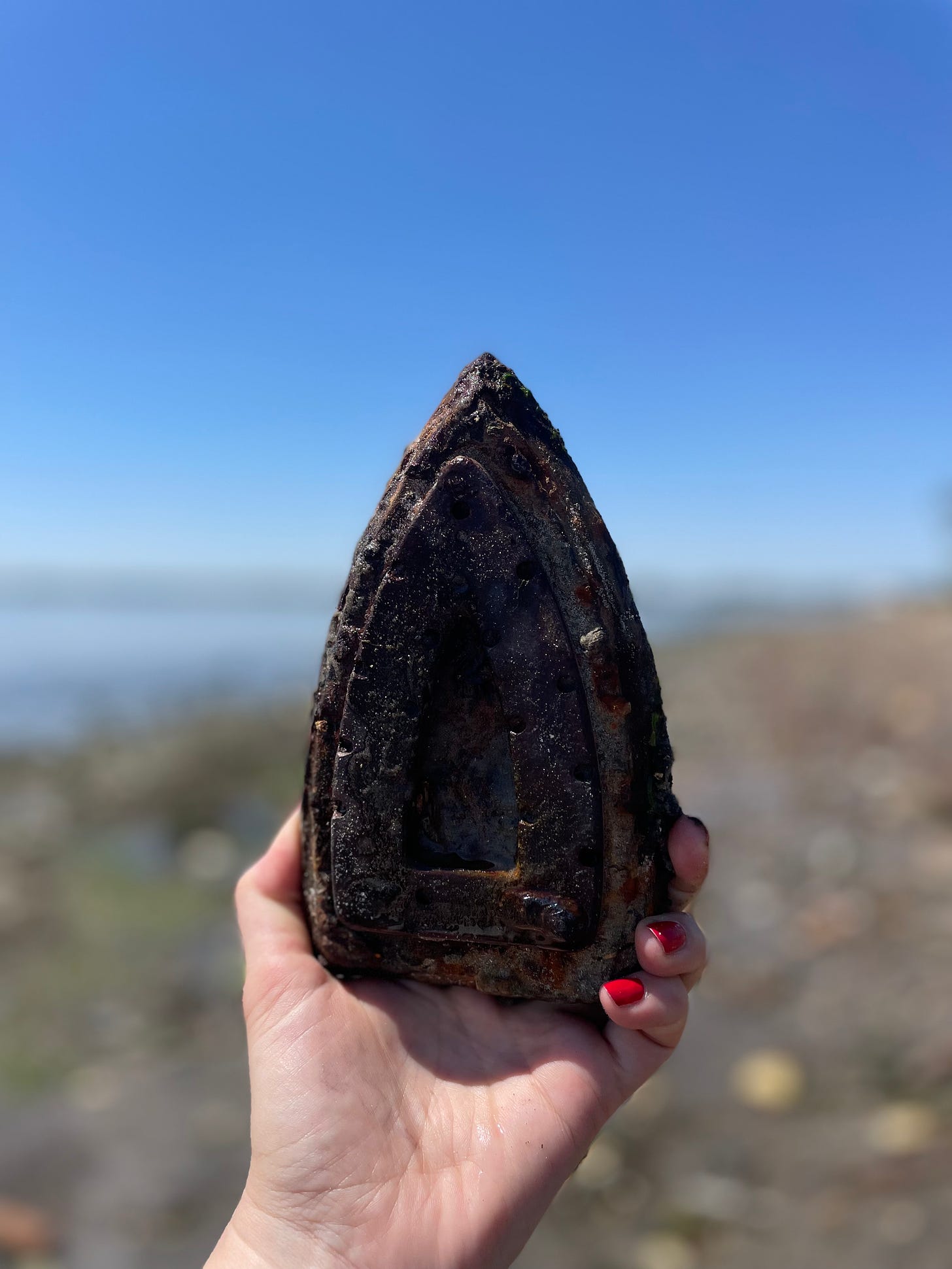

It is a try time capsule. Thank you for sharing
Oh my goodness, this is so fascinating. I never knew any of the history of Dead Horse Bay. You made it come alive. Thank you Lia.